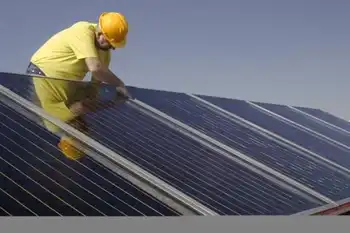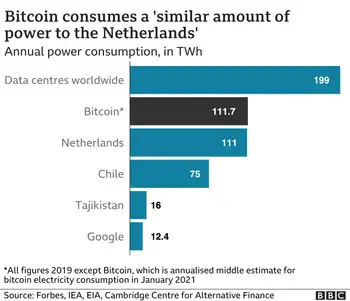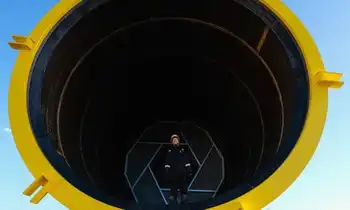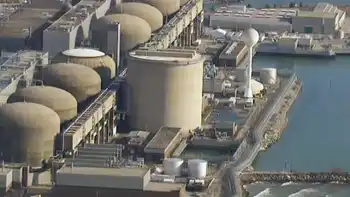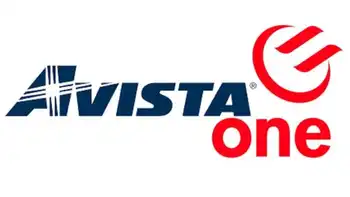Recession slows power demand and renewable growth
By New York Times
CSA Z462 Arc Flash Training - Electrical Safety Essentials
Our customized live online or in‑person group training can be delivered to your staff at your location.

- Live Online
- 6 hours Instructor-led
- Group Training Available
A year ago, the North American Electric Reliability Corp. had predicted that total electric power consumption in the United States and Canada's southern provinces would top 4,700 gigawatt-hours this year. In its annual long-term assessment, NERC predicted that total would not be reached until 2011, two years later.
NERC's new forecast of the annual increase in electricity demand has dropped below 1.5 percent per year. Four years ago, it was predicting annual electricity growth of nearly 2 percent.
Peak power demand forecasts for 2009 have dropped by 4 percent from 2008 estimates, Federal Regulation and Oversight of Energy (FERC) said. The economy's slump accounts for 80 percent of the reduced demand. The rest comes from a significant increase in energy efficiency gains and demand response programs, notably agreements by commercial customers to curtail power use when emergency shortages threaten. Canada's Ontario province has achieved the greatest results on this front.
The breathing spell in power demand overall is not shared equally around the country, NERC said. Two of its oversight regions, the Southwest Power Pool and the SERC Reliability Corp. in the Southeast, are already "facing significant transmission constraints."
NERC said that a resulting lag in new transmission projects is slowing the growth of renewable energy production and could threaten power shortages over the next five years.
More than 11,000 miles of high-voltage transmission lines must be completed to meet reliability requirements by 2013, NERC said. That is more than double the average number of transmission miles built in any five-year period since 1990, the report by the Princeton, N.J., organization says.
In a separate announcement, Obama administration officials announced a new memorandum of understanding among nine federal departments and agencies to consolidate their reviews of high-voltage power line projects on federal lands. "The process of siting and permitting new transmission lines on federal lands has posed a barrier to efficient grid enhancements," said Nancy Sutley, chairwoman of the White House Council on Environmental Quality.
The agreement is designed to cut federal agency reviews by one-third, taking a year off the permitting process — which now can take two to five years — "while fully maintaining all environmental reviews and safeguards," Sutley said. The agreement affects U.S. EPA, the Council on Environmental Quality, the Federal Energy Regulatory Commission, the Advisory Council on Historic Preservation, and the Interior, Agriculture, Defense, Energy and Commerce departments.
Interior Secretary Ken Salazar said that federal siting reviews for projects crossing huge federal tracts in Western states have been "inconsistent and frankly confusing."
Under the new process, one of the departments or agencies involved in a project would be tapped as a regulatory coordinator, permitting the work of various agencies to go forward in parallel rather than a one-at-a-time review.
Rich Halvey, energy program director of the Western Governors' Association, applauded the agreement, saying, "In terms of objectives, I think we're closely aligned" with the administration.
The time taken by federal agency reviews has been a frustration, he added.
"We need a federal permitting system that bridges the gap between the time it takes to develop renewable energy and develop transmission. Some governors have said that under the current permitting regime, if they could avoid federal lands, they would. They believe the federal process — because of how long it takes — can stymie some projects," Halvey said.
PacifiCorp has begun construction of a $6 billion, 1,900-mile Energy Gateway transmission project with two legs, connecting Wyoming with southern Oregon and southern Nevada. But it is still awaiting federal agency approval on parts of the project, which currently is due to be completed in 2019. "No question, this streamlining is important," said a company spokesman. "There is still a need to reconcile interests — not the parochial interests, but the institutional ones. What's important for the Forest Service is not necessarily as important for Fish and Wildlife or the Bureau of Land Management.
"This is a step in the right direction, but it is still the biggest challenge."
The administration has been pressured to maintain environmental and wilderness protections while it promotes renewable energy development in the West. A letter to Sutley in September from 17 environmental organizations said that the National Environmental Policy Act is facing "continued assaults" from members of Congress, in the guise of promoting major wind and solar energy projects. "NEPA is a bridge — not a roadblock — to ensuring that renewable energy development on public lands is carried out in a transparent, responsible manner," the groups said.
The NERC report predicts that wind power capacity will be the largest new source of generation capacity over the next decade, growing by 229,000 megawatts. Solar power is projected to add 20,000 megawatts of capacity in that period. Under that scenario, wind power would be providing 18 percent of total U.S. electricity supply in 2018.
But wind can be counted on to meet only 3 percent of the demand for peak power on the hottest summer days, NERC said. Increasingly, natural gas generation will be called on to fill the gaps when wind and solar energy are not available, it said.
NERC cautioned that the growth of wind generation is already placing strains on grid operators, which must adjust to sharp and sudden swings in its availability. That challenge will only increase, posing a "real, critical and growing" issue, it said.





